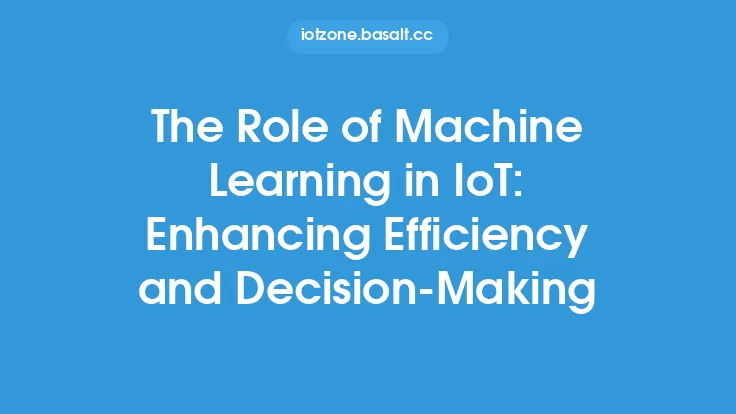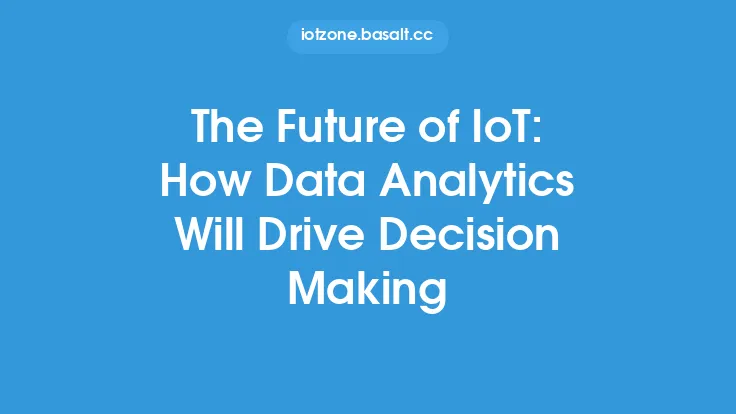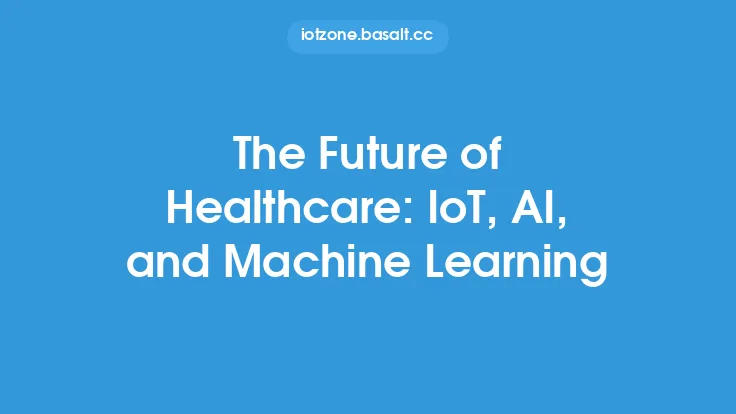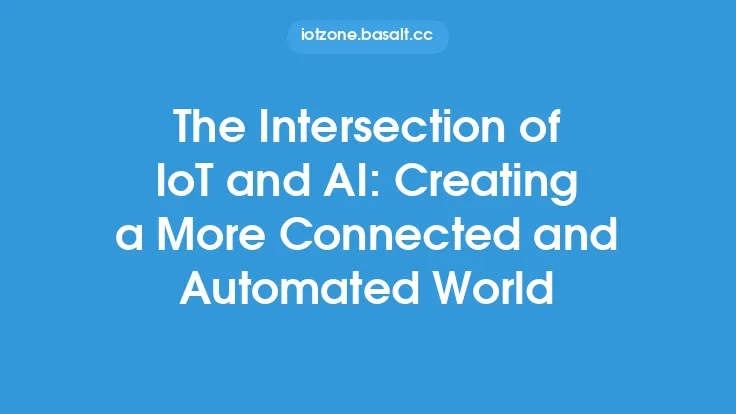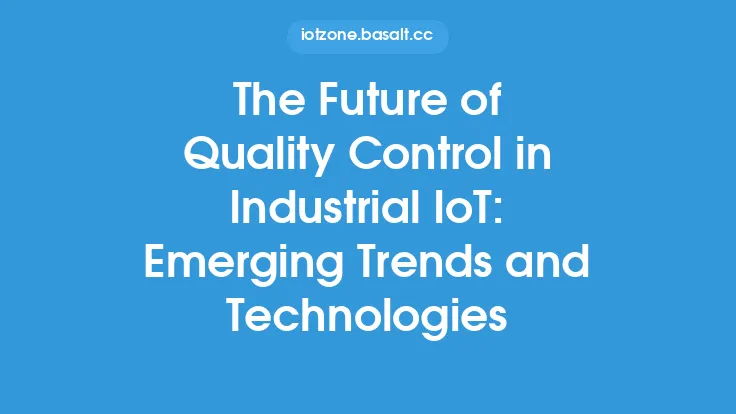The transportation sector is on the cusp of a revolution, driven by the convergence of the Internet of Things (IoT), Artificial Intelligence (AI), and data-driven decision making. As the world's population continues to urbanize, the demand for efficient, safe, and sustainable transportation systems has never been more pressing. The integration of IoT, AI, and data analytics is poised to transform the transportation landscape, enabling the creation of intelligent transportation systems that are capable of optimizing traffic flow, reducing congestion, and improving the overall travel experience.
Introduction to IoT in Transportation
The Internet of Things (IoT) refers to the network of physical devices, vehicles, and infrastructure that are embedded with sensors, software, and connectivity, allowing them to collect and exchange data. In the context of transportation, IoT devices can include traffic cameras, sensors, and GPS trackers, as well as vehicles themselves, which can be equipped with a range of sensors and communication systems. The data generated by these devices can be used to optimize traffic signal timing, predict and prevent traffic congestion, and improve the overall efficiency of transportation systems.
The Role of AI in Transportation
Artificial Intelligence (AI) is a critical component of the transportation revolution, enabling the analysis and interpretation of the vast amounts of data generated by IoT devices. AI algorithms can be used to identify patterns and trends in traffic data, predict traffic congestion, and optimize traffic signal timing. Additionally, AI-powered systems can be used to analyze data from vehicle sensors, such as speed, acceleration, and braking patterns, to predict and prevent accidents. The use of AI in transportation also enables the development of autonomous vehicles, which have the potential to revolutionize the way we travel.
Data-Driven Decision Making in Transportation
Data-driven decision making is a key aspect of the transportation revolution, enabling transportation agencies and private companies to make informed decisions about transportation planning, operations, and maintenance. The use of data analytics and AI algorithms can help to identify areas of congestion, optimize traffic signal timing, and predict and prevent accidents. Additionally, data-driven decision making can be used to optimize transportation systems, such as traffic routing and scheduling, to reduce congestion and improve the overall efficiency of transportation systems.
Technical Aspects of IoT in Transportation
From a technical perspective, the integration of IoT, AI, and data analytics in transportation requires a range of technologies, including sensor systems, communication protocols, and data analytics platforms. Sensor systems, such as cameras, radar, and lidar, are used to collect data on traffic conditions, vehicle speed, and other factors. Communication protocols, such as cellular, Wi-Fi, and dedicated short-range communication (DSRC), are used to transmit data between vehicles and infrastructure. Data analytics platforms, such as cloud-based systems and edge computing, are used to analyze and interpret the vast amounts of data generated by IoT devices.
Applications of IoT, AI, and Data Analytics in Transportation
The applications of IoT, AI, and data analytics in transportation are numerous and varied. Some examples include:
- Intelligent traffic management systems, which use real-time data and AI algorithms to optimize traffic signal timing and reduce congestion.
- Autonomous vehicles, which use a range of sensors and AI algorithms to navigate and interact with their environment.
- Predictive maintenance, which uses data analytics and AI algorithms to predict and prevent vehicle failures and reduce maintenance costs.
- Route optimization, which uses data analytics and AI algorithms to optimize traffic routing and reduce congestion.
- Smart parking systems, which use sensors and data analytics to guide drivers to available parking spaces and reduce congestion.
Benefits of IoT, AI, and Data Analytics in Transportation
The benefits of IoT, AI, and data analytics in transportation are numerous and significant. Some of the key benefits include:
- Improved safety, through the use of predictive analytics and AI algorithms to predict and prevent accidents.
- Increased efficiency, through the optimization of traffic signal timing and traffic routing.
- Reduced congestion, through the use of real-time data and AI algorithms to optimize traffic flow.
- Improved passenger experience, through the use of data analytics and AI algorithms to optimize traffic routing and reduce travel times.
- Increased sustainability, through the reduction of fuel consumption and greenhouse gas emissions.
Challenges and Limitations of IoT, AI, and Data Analytics in Transportation
Despite the many benefits of IoT, AI, and data analytics in transportation, there are also several challenges and limitations that must be addressed. Some of the key challenges include:
- Data quality and integrity, which can be affected by factors such as sensor accuracy and data transmission reliability.
- Cybersecurity, which is a critical concern in the context of connected and autonomous vehicles.
- Privacy, which is a concern in the context of data collection and analysis.
- Interoperability, which can be a challenge in the context of integrating different systems and technologies.
- Public acceptance, which can be a challenge in the context of introducing new technologies and systems.
Future Directions for IoT, AI, and Data Analytics in Transportation
The future of transportation is likely to be shaped by the continued development and deployment of IoT, AI, and data analytics technologies. Some of the key trends and directions that are likely to shape the future of transportation include:
- The increasing use of autonomous vehicles, which are likely to revolutionize the way we travel.
- The development of smart cities, which will integrate transportation systems with other urban systems, such as energy and water management.
- The use of edge computing and fog computing, which will enable the analysis and interpretation of data in real-time, at the edge of the network.
- The development of new business models, such as mobility-as-a-service, which will enable users to access transportation services on demand.
- The increasing focus on sustainability, which will drive the development of electric and hybrid vehicles, as well as more efficient transportation systems.
